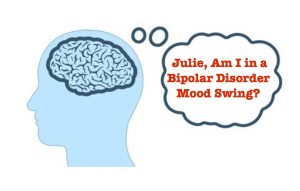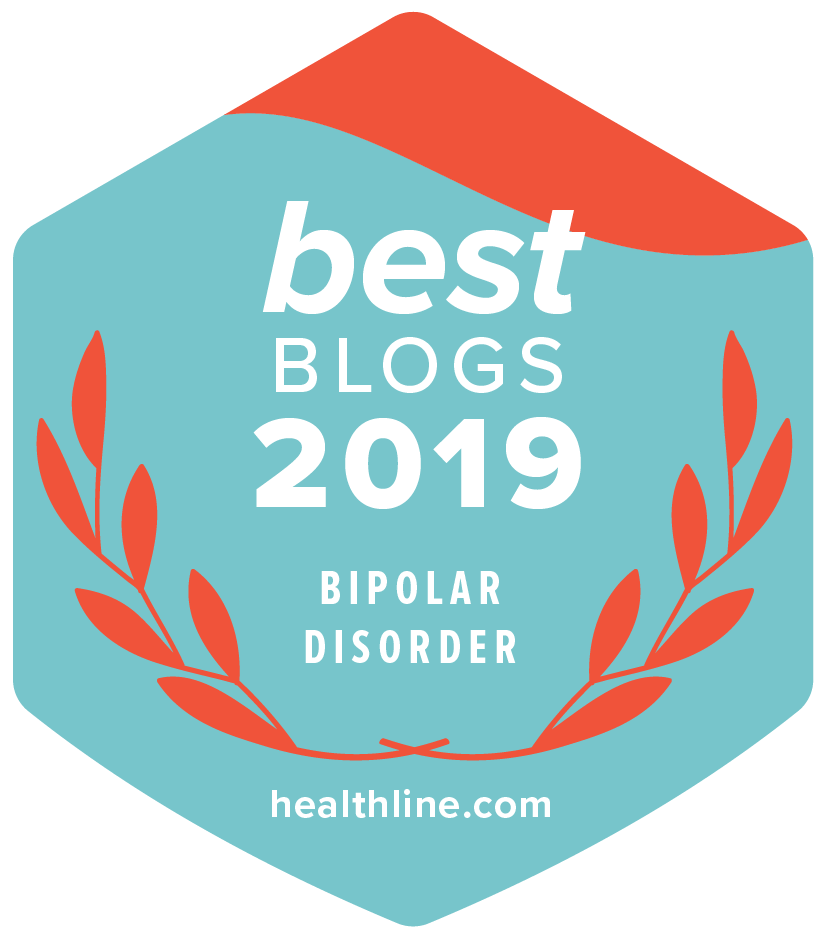 Bipolar Disorder Check-in Quiz: How is your mood right now?
Bipolar Disorder Check-in Quiz: How is your mood right now?
The following quiz was created by Julie A. Fast for people with bipolar disorder to check their current mood. Please answer the quiz using your stable mood behavior as a base. One (1) means that you are stable relating to the question, two (2) you have mild symptoms, three (3) means you are moving towards illness, four (4) means you are not doing well but can still deal with things on your own and with help of others, five (5) means that you are not doing well at all and are worried about your behavior and need immediate help.

This quiz tells you how you are right now and can be used as a regular check in each month. Explanations of your total numbers are at the end of the quiz along with treatment suggestions. Ludvig will take the quiz with you. Good luck. I hope your score is super low!
1. Sleep 7-9 hours a day with or without sleep aid and feel rested when you wake up.
2. Work with ease. Able to sit still, follow a schedule and reach your goals.
3. Patient with the people in your life and those in public.
4. Keep up with meds. Taking them regularly and on schedule.
5. Feel safe in the world and know that no one is out to get you.
6. You have thoughts of killing yourself.
7. Creativity is at baseline instead of elevated.
8. You have hopeful thoughts about the future.
9. Calmly face situations without elevated breathing and feeling there is something wrong.
10. Drug, alcohol, food and caffeine consumption are not at an abuse level.
Add your numbers and use the following chart to measure your current bipolar disorder mood.
1-10 You are doing well. Stick with what is working and regularly check in to make sure you stay stable. Ask yourself, what am I doing that works? How do I maintain this behavior?
10-20 There may be one area where you’re having trouble- identify the area and make the changes. If you are in this level in general- it’s not a bad place to be. Increased management using the tools you have can move you back to true stability.
20-30 This is where you can go either way. If you’re at the 30 level, changes are needed. This is the time to add new treatment tools and talk with others about how they can help you get back to stability.
30-40 This is where bipolar disorder starts to get dangerous. Sometimes the symptoms are masked and you think it’s your fault because you can’t get your act together. Mania may be just strong enough for you to think things are fine even though others are worried about you. You may be thinking of stopping your meds, are missing meds or have gone off meds. The depression is strong, but not yet actively suicidal. There is so much that happens at this level.
40-50 You need immediate help- from yourself, others and medications. This ranking means that bipolar is currently stronger than you are. It may be in one area or evenly in all areas. No matter what, ask yourself what triggers are increasing symptoms. Do you need to call your doctor, go to the hospital, get your meds back on track or get your plan out for a review? Who can you ask for help?
What each question represents:
1) Changes to sleep due to mania, depression, a trigger or medications.
2) Agitation, ADHD symptoms, trouble focusing due to depression, mania or medication problems.
3) Anger and irritation.
4) Taking medications as prescribed, unable to take meds due to side effects, missing doses or refusing meds.
5) Paranoia- when mild it’s in the thought area and not as serious, when more severe, it’s in the psychosis realm.
6) Moderate to severe depression. Suicidal thoughts are passive and can often be managed with your treatment system, if you have a plan, the thoughts are active and must be addressed immediately.
7) Mania.
8 ) Depression.
9) Anxiety.
10) Using a substance that triggers bipolar disorder symptoms, especially if the substance affects sleep.
The most important point to remember is that bipolar disorder is an illness. It’s not personal and it’s not easy to treat on your own. Medications are needed (it can take a long time to find medications that work) and a comprehensive treatment plan is essential. If you’re a family member or friend, your education on bipolar disorder is essential. The illness is not static- it can move all over the place. A person can be at a ten and then at a 50 just a few months later. This is why a consistent plan works.
Tips and Observations
1. Recognizing your sleep patterns is the best way to monitor your mood swings. All mood swings come with some kind of sleep change such as staying in bed all day or not sleeping and still feeling full of energy.
2. If there is one area that is always a 4 or 5, this is a good place to focus your treatment plan and create plan for the topic, such as a plan for road rage.
3. If you smoke pot daily, please note that it’s a stimulant even though it feels relaxing. It’s detrimental to bipolar disorder management. It is much stronger than the silly stuff in the 80’s and can cause psychosis that is strong enough to put you in the hospital. I believe that pot is more dangerous than alcohol. Think about it. Do you really want to be stable or is pot more important? It’s a hard question.
4. Suicidal thoughts are a normal part of bipolar disorder, but they are a sign that you need help. There is nothing shameful about being suicidal. It’s a normal part of the illness.
5. If your number goes up and down on a regular basis, especially in terms of mania and depression, read the information on www.BipolarHappens.com/bhblog and in my books about rapid cycling.
6. Bipolar disorder management requires a team approach- if you’re a family member or partner, creating your own plan to help your loved one is essential.
7. Bipolar disorder takes lifelong management. It’s normal to do well and then suddenly find the symptoms creeping up on you. This is a good time to take the quiz again!
 How do I keep my quiz numbers low? The Health Cards.
How do I keep my quiz numbers low? The Health Cards.
The Health Cards Treatment System for Bipolar Disorder was created as a comprehensive treatment plan to address all levels represented in the quiz. It works with every symptom and addresses all treatment possibilities including how a person with the illness can effectively ask for help, what personal triggers need to be recognized and modified and whether medications are effective or more are needed. The Health Cards also help family members and friends to learn what it’s like to have the illness and how they can help. I love them.
I invite you to try the Health Cards so that you can remain at the 1-10 level and have optimum mental health, positive and stable relationships, work you love and a life filled with possibility and joy.






